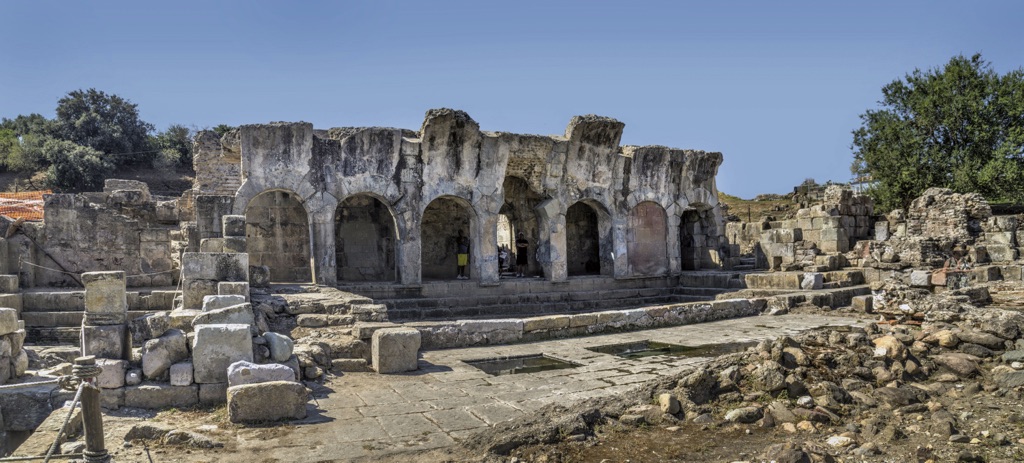The Roman baths of Fordongianus, nestled on the banks of the river Tirso in Sardinia, Italy, are a testament to the grandeur of Roman engineering and culture. Known locally as ‘Terme Romane di Fordongianus’, the thermal complex dates back to the 1st century AD, showcasing the Roman Empire’s dedication to leisure and health. These ancient baths, fed by natural hot springs, were a hub of social activity, offering a glimpse into the daily life of Romans. Today, they stand as a significant archaeological site, attracting history enthusiasts and scholars alike, eager to explore the remnants of Rome’s imperial past.
Get your dose of History via Email
Historical Background of Roman Baths of Fordongianus
Discovered in the 19th century, the Roman baths of Fordongianus have since unveiled a rich history. They were built during the reign of Emperor Trajan, as inscriptions suggest. The Romans, recognizing the therapeutic properties of the local springs, constructed the baths to harness these benefits. Over time, the complex expanded, reflecting its popularity and the growth of the surrounding settlement, Forum Traiani.
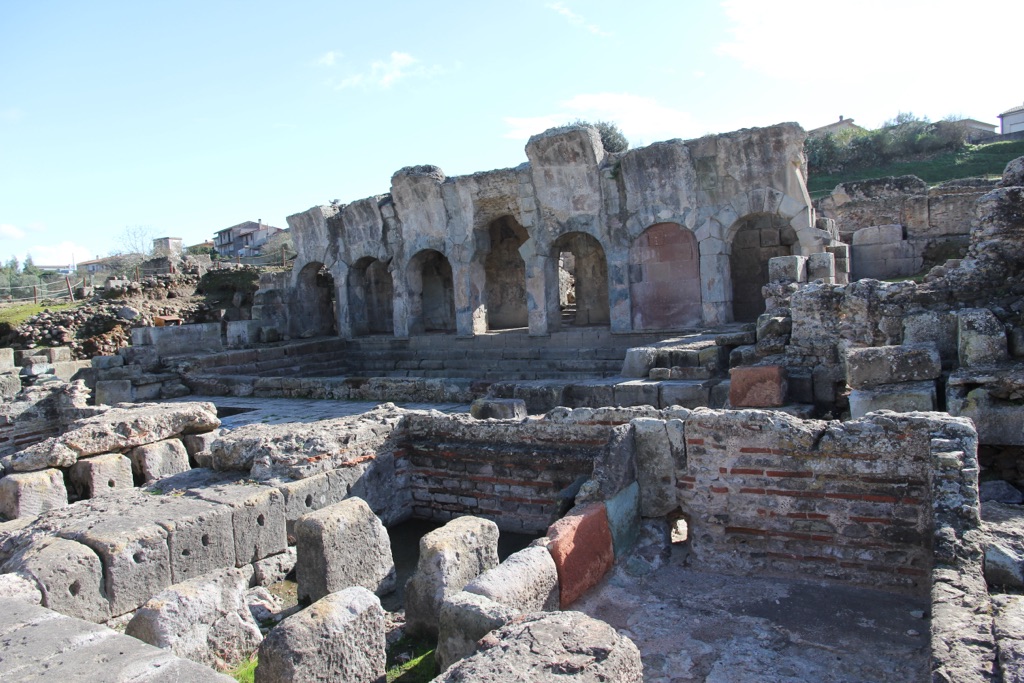
After the fall of the Roman Empire, the baths continued to serve the local population. They were later repurposed during the Middle Ages, with some structures transformed into defensive positions. The site has witnessed various historical events, including the Arab invasions, which left their mark on the region.
The baths were not just a place for relaxation but also a social and business center. They played a crucial role in the local economy and social structure. The complex’s design and construction techniques were typical of Roman bathhouses, with distinct areas for different bathing stages, reflecting the ingenuity of Roman architects and engineers.
Excavations and restorations have revealed the baths’ intricate systems, such as hypocausts for heating and sophisticated water channels. These findings have provided valuable insights into Roman construction methods and their ability to create sustainable public facilities.
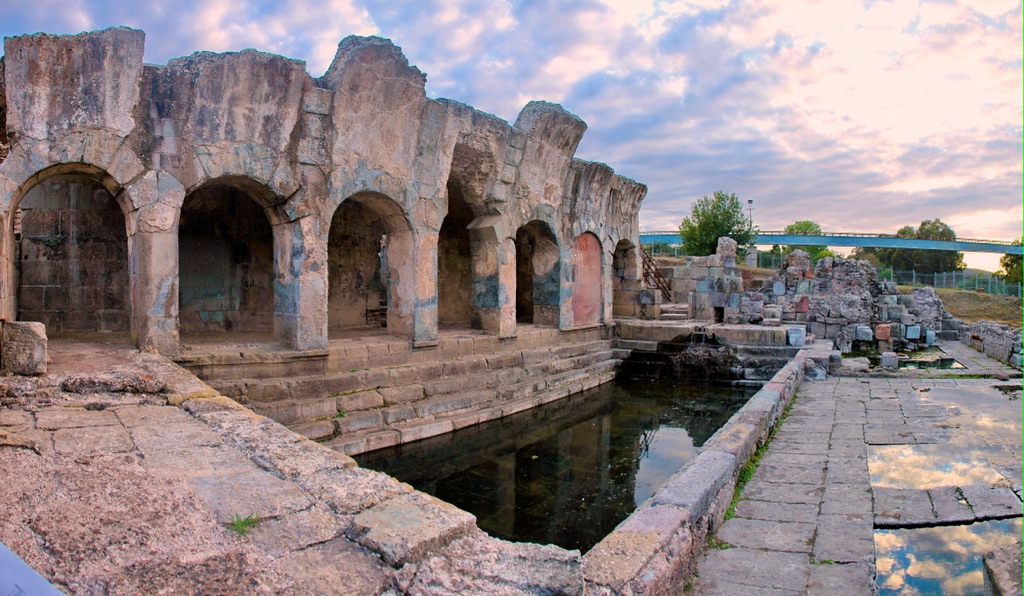
Today, the Roman baths of Fordongianus are a cultural heritage site, protected and studied by historians and archaeologists. They offer a tangible connection to the past, allowing visitors to step back in time and experience the legacy of Roman civilization.
About Roman Baths of Fordongianus
The Roman baths of Fordongianus are an architectural marvel, built to last and to impress. The complex was constructed using local materials, such as basalt stone, which was abundant in the region. This choice of material not only provided durability but also added to the aesthetic appeal of the baths.
The baths featured several key areas, including the frigidarium (cold room), tepidarium (warm room), and caldarium (hot room). Each served a specific purpose in the bathing process, designed to optimize the therapeutic effects of the waters. The caldarium, with its hot pools, was the centerpiece, directly over the natural hot springs.
Architectural highlights include well-preserved mosaics, columns, and arches that demonstrate the artistic skills of the craftsmen. The hypocaust system, a type of ancient underfloor heating, was a technological wonder, ensuring the baths remained at the perfect temperature for users.
The layout of the baths was strategic, allowing for efficient circulation of patrons and maintaining the functionality of the complex. The design also took into consideration the social aspect of bathing, with spaces for relaxation and conversation.
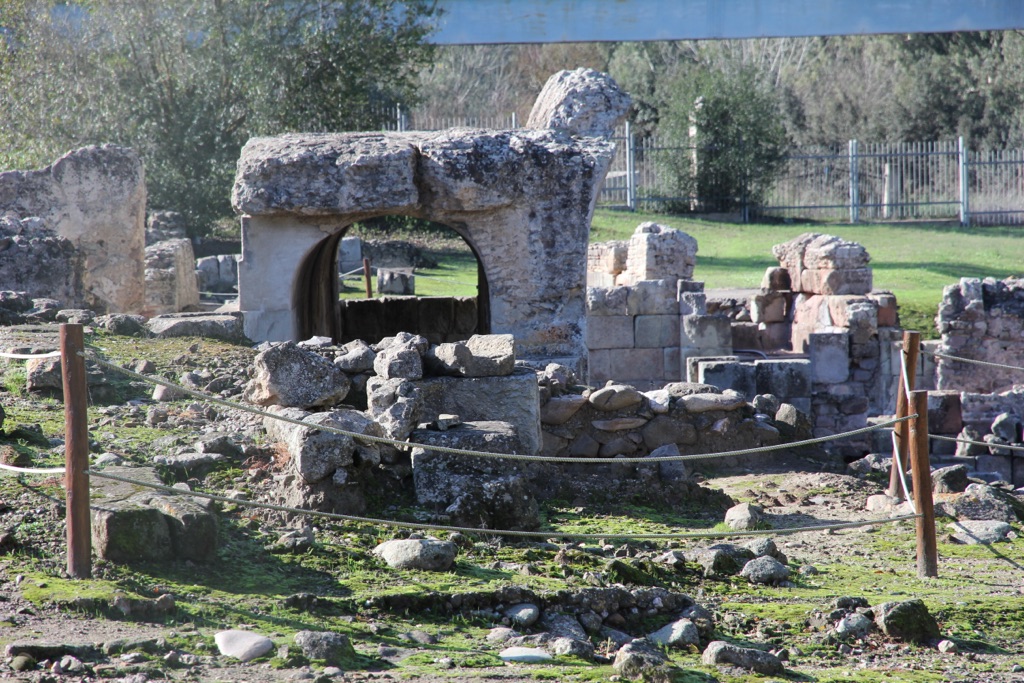
Over the centuries, the baths have undergone various modifications, reflecting changes in use and cultural influences. However, the core Roman design elements remain, offering a window into the architectural prowess of the ancient builders.
Theories and Interpretations
The Roman baths of Fordongianus have sparked numerous theories regarding their use and significance. Some scholars suggest that the baths were more than just a place for bathing; they were a cultural and social nexus for the community.
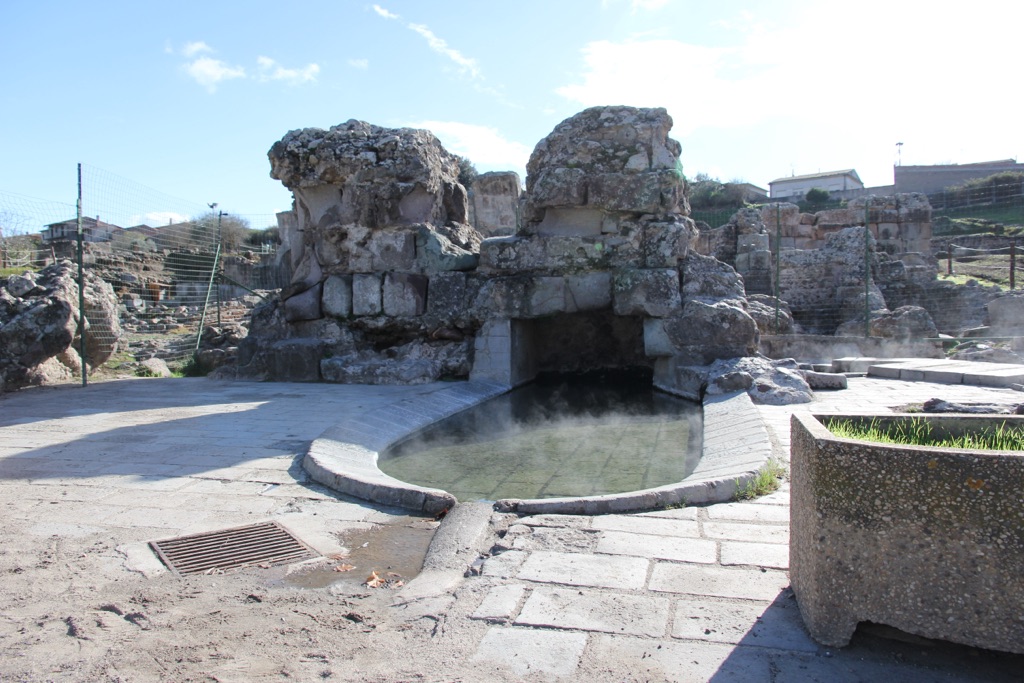
There are mysteries surrounding certain symbols and inscriptions found at the site. These have led to various interpretations, linking the baths to religious practices and the worship of water deities.
The exact function of some rooms and structures within the complex is still debated. Historians and archaeologists compare these features with other Roman bathhouses to deduce their purposes.
Dating the baths has been carried out using methods such as stratigraphy and thermoluminescence. These techniques have helped establish a timeline for the construction and use of the baths.
Theories about the decline of the baths also abound. Some attribute it to the fall of the Roman Empire, while others point to natural disasters or shifts in social practices.
At a glance
Country: Italy
Civilization: Roman Empire
Age: 1st century AD
Conclusion and Sources
Reputable sources used in the creation of this article include:
- Wikipedia: https://en.wikipedia.org/wiki/Fordongianus

